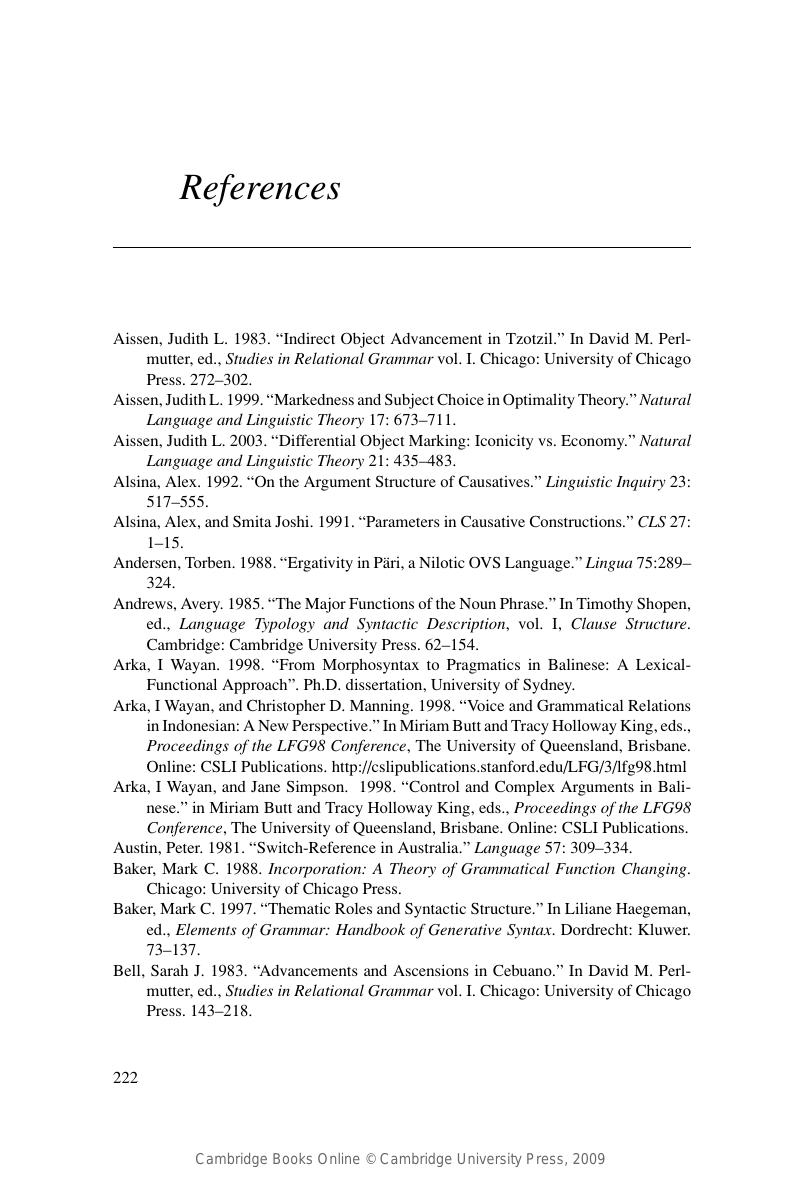Book contents
References
Published online by Cambridge University Press: 22 September 2009
Summary

- Type
- Chapter
- Information
- Subjects and Universal GrammarAn Explanatory Theory, pp. 222 - 230Publisher: Cambridge University PressPrint publication year: 2006



